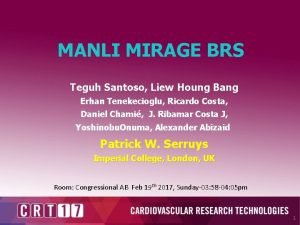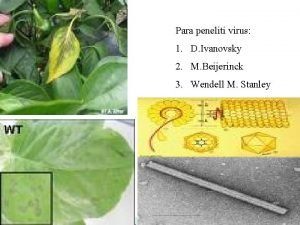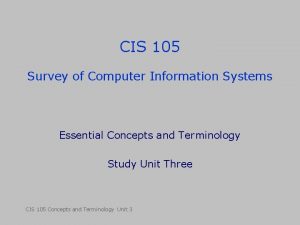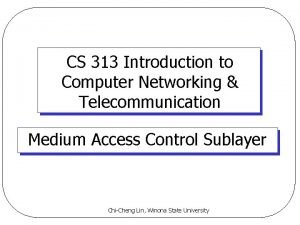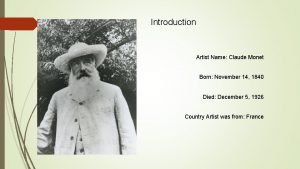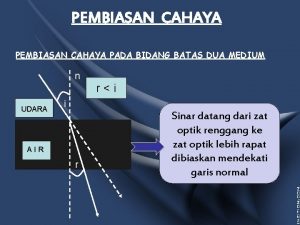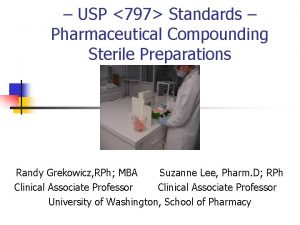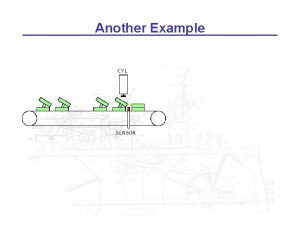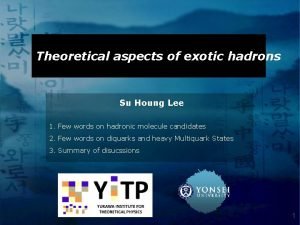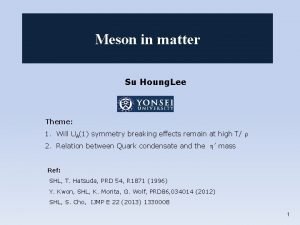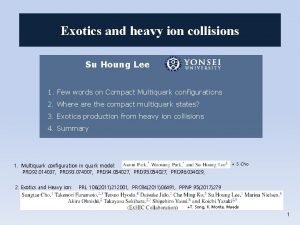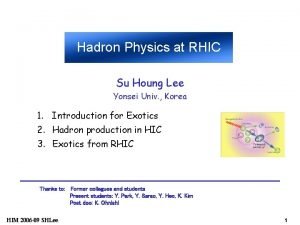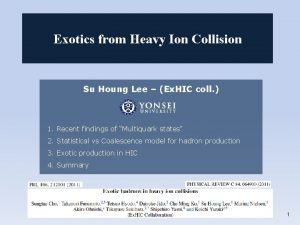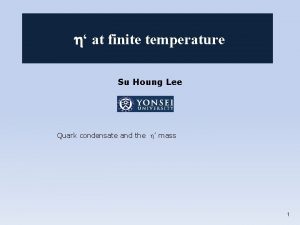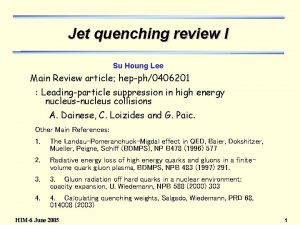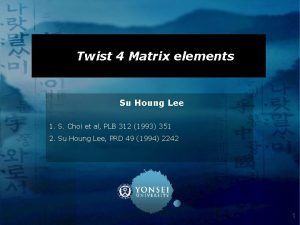Another look at h in medium Su Houng

















- Slides: 17

Another look at h‘ in medium Su Houng Lee Theme: Relation between Quark condensate and the h’ mass Ref: SHL, T. Hatsuda, PRD 54, R 1871 (1996) Y. Kwon, SHL, K. Morita, G. Wolf, PRD 86, 034014 (2012) SHL, S. Cho, IJMP E 22 (2013) 1330008 1

Correlators and Quark condensate 1. Some introduction 2. Casher Banks formula 3. Lee-Hatsuda formula 2

Quark condensate – Chiral order parameter Finite temperature Lattice gauge theory 1 T/Tc Finite density Linear density approximation r/rn 3

Chiral symmetry breaking (m 0) : order parameter • Quark condensate Casher Banks formula: Chiral symmetry breaking order parameter 4

• Other order parameters: s - p correlator (mass difference) Remember: 5

• Other order parameters: V - A correlator (mass difference) 6

UA(1) effect : effective order parameter (Lee, Hatsuda 96) • Topologically nontrivial contributions • h ‘- p correlator (mass difference) T. Cohen (96) 7

• h ‘- p correlator (mass difference) n=1 Lee, Hatsuda (96) U(1) A symmetry will effectively be restored in two point functions up to quark mass terms in SU(3) so what happens to the h‘ mass? Note three point functions sensitive to U(1) A symmetry will remain broken N-point function will be always broken for SU(N) flavor. 8

h’ meson mass ? 1. Witten – Veneziano formula 2. At finite temperature and density 9

h’ mass? Witten-Veneziano formula - I • Correlation function • Contributions from glue only • When massless quarks are added • Large Nc argument • Need h‘ meson from low energy theorem 10

Witten-Veneziano formula – II • h‘ meson Lee, Zahed (01) at m 0 limit Should be related to 11

Witten-Veneziano formula at finite T • Large Nc counting • At finite temperature, only gluonic effect is important Glue Nc 2 (Kwon, Morita, Wolf, Lee: PRD 12 ) Quark Nc 2 ? 12

• Large Nc argument for Meson Scattering Term Witten That is, scattering terms are of order 1 and can be safely neglected WV relation remains the same 13

• LET (Novikov, Shifman, Vainshtein, Zhakarov) at finite temperature for S(k): Ellis, Kapusta, Tang (98) 14

• at finite temperature Cohen 96 Therefore, when chiral symmetry gets restored 15

• W-V formula at finite temperature: Smooth temperature dependence even near Tc Therefore , : eta’ mass should decrease at finite temperature 16

Summary 1. h’ correlation functions should exhibit symmetry breaking from N-point function in SU(N) flavor even when chiral symmetry is restored. For SU(3), the two point function will become symmetric. 2. In W-V formula h’ mass is related to quark condensate and thus should reduce at finite temperature a) Could serve as signature of chiral symmetry restoration b) Dilepton in Heavy Ion collision c) Measurements from nuclear targets ? Generalization to Nuclear medium possible 17
 Looking down to the left
Looking down to the left Liew houng bang
Liew houng bang Hot and cold media
Hot and cold media Medium medium 35m newton
Medium medium 35m newton The mysteries of harris burdick a strange day in july
The mysteries of harris burdick a strange day in july Look at the picture the illustration
Look at the picture the illustration Look at activity 1 and answer
Look at activity 1 and answer Look at activity 1 and answer
Look at activity 1 and answer Operating lease journal entries
Operating lease journal entries Specific cake resistance and filter medium resistance
Specific cake resistance and filter medium resistance Medium reproduksi yang paling cocok untuk menumbuhkan virus
Medium reproduksi yang paling cocok untuk menumbuhkan virus Storage device that uses laser technology
Storage device that uses laser technology Medium-sized star
Medium-sized star Medium termyn doelwitte
Medium termyn doelwitte Telecommunication medium
Telecommunication medium Artist name
Artist name Pada bidang batas antara dua medium
Pada bidang batas antara dua medium Usp 797 laminar flow hood cleaning
Usp 797 laminar flow hood cleaning

